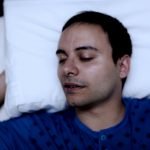PCOS: A Leading Cause of Infertility
Mary Shackelton, MPH, ND
Polycystic ovarian syndrome (PCOS) affects 5%-10% of all women of reproductive age making it the most common endocrine disorder among women. While the exact cause of PCOS is still not clearly identified, the majority of research implicates having excess levels of insulin or insulin resistance as its main cause.
Insulin resistance is defined as a decreased sensitivity to one’s own insulin due to physical inactivity, excessive carbohydrate consumption, increased pancreatic sensitivity, and genetic predisposition. As insulin insensitivity increases, the pancreas secretes greater and greater levels of insulin, which further decreases one’s sensitivity to the insulin. The greater the levels of insulin the fewer insulin receptor sites are available for insulin to bind to. A typical healthy cell will have 20,000 insulin receptor sites; an insulin-resistant cell will have closer to 5000.
In fact, 8 out of every 10 women with PCOS could have insulin resistance, resulting in higher than normal insulin levels. This increase in insulin decreases sex hormone binding globulin (SHBG), which increases androgens (testosterone). This has a direct effect on ovarian cyst formation. The end result is that a PCOS sufferer may stop ovulating, gain weight, develop skin conditions like acne and skin tags, and grow abnormal facial and body hair.
The clinical picture of PCOS varies widely from woman to woman, and because the symptoms vary so widely and not all women display all the symptoms, doctors often misdiagnose PCOS.
Primary PCOS symptoms include amenorrhea, oligomenorrhea, anovulation, cystic ovaries, dyslipidemia, enlarged ovaries, hypertension, insulin resistance, and obesity. Secondary symptoms may be present in some women and not others. They include aconthosis nigricans, HAIRAN (hyperandrogenic-insulin resistant acanthosis nigricans—this group of symptoms when present together are a more severe form of PCOS), hiradenitis suppurativa (severe chronic inflammation of the apocrine glands in the axillae and groin), acne, acrochordons (skin tags), and chronic pelvic pain.
Despite insulin resistance being the causative factor in PCOS, 50% of women with PCOS are “lean”; that is, they do not exhibit the typical profile of a woman who has PCOS with insulin resistance and are thus at greater risk of being misdiagnosed.
Key Diagnostic Indicators
- Total testosterone > 70
- LH/FSH > 2:1
- SHBG: low
- Elevated fasting insulin > 9
- Dyslipidemia
- Elevated DHEA-S
- Patient may or may not have polycystic ovaries
PCOS puts women at greater risk of having cardiovascular disease, and up to 40% of women with PCOS have either impaired glucose tolerance or type 2 diabetes by the age of 40. Additionally, PCOS sufferers experience greater rates of hypertension, metabolic syndrome, nonalcoholic fatty liver disease (NAFLD), hypercholesterolemia, and cancer. These concomitant disorders substantially raise the bar on the seriousness of the condition, and make it even more important that physicians appropriately diagnose PCOS and treat it accordingly.
PCOS and Infertility
In addition to the often devastating clinical symptoms of PCOS is an increased chance of infertility in PCOS sufferers. Infertility is the failure to conceive after a year of regular intercourse without contraception. Of women with PCOS, 40% to 80% struggle with infertility, and a lack of ovulation is the main causative factor. A complex web of multiple hormone imbalances contributes to the inability to secrete an egg each month, and the hormones involved include insulin, androgens, estrogens, progesterone, luteinizing hormone (LH), follicle stimulating hormone (FSH), cortisol, thyroid hormones, prolactin, and others. All these hormones are in dynamic relationship to each other and influence each other causing anovulation.
Conventional Medical Management of Infertility
Conventional medicine addresses symptomatic relief of PCOS. Medications are prescribed in an off-label manner; that is, they are approved by the FDA for the treatment of one disorder but have been found to be effective at alleviating a symptom of PCOS. For example, spironolactone (Aldactone) is a diuretic prescribed for women with PCOS to address hair loss and block the effects of androgens, but it was used first to address hypertension. To date there are no clinical trials evaluating the efficacy and safety of these medications with PCOS.
If ovulation is not happening or not occurring regularly there are two FDA-approved drugs traditionally used for the induction of ovulation: clomiphene citrate (Clomid) and injectable gonadotropins. Clomid is usually the first line of defense in patients with PCOS who want to conceive, and the drugs stimulate the ovary by increasing the concentration of gonadotropins (LH and FSH). The higher the gonadotropins the more likely there will be follicles in the appropriate stage of development and readiness for ovulation.
Insulin sensitizers such as glucophage (Metformin) are used as antihyperglycemics to lower insulin and glucose levels. With the available medications and possibilities for inducing ovulation pharmaceutically, some women still require a more aggressive approach. In vitro fertilization or IVF is the process of providing diagnostic procedures for assessment of egg quality, egg collection, and treatment of male factor infertility, and it usually has a good success rate. However, the financial expense is often great, as is the pain, time, emotional cost, and lack of guaranteed success.
Naturopathic Treatment of Infertility in the Patient with PCOS
The naturopathic approach allows the practitioner to addresses the causes of the infertility—insulin resistance, chronic anovulation, hyperandrogenemia, and lifestyle issues—as a means to remove obstacles to conceiving.
Diet
- Specific diet changes to address insulin resistance include:
- Remove all refined carbohydrates (e.g., sugar, flour, soda, juices)
- 60-100 grams of carbs per day from vegetables and low-glycemic fruits
- 5-8 servings of green vegetables per day
- Include good fats (e.g., avocadoes, fish, eggs, nuts, olive oil)
- Include protein at each meal and snack
- 3 meals per day
- 1-2 snacks per day
Exercise
The importance of exercise in reversing insulin resistance cannot be overlooked. Exercise increases skeletal muscle disposal of glucose, decreases insulin requirements, and upregulates insulin receptor sites. Specific exercise recommendations include:
- 15 minutes before or after a meal (or both)
- For beginners the goal is 30 minutes of walking per day
- For intermediate or advanced exercisers, include resistance training
- Goal: 1 hour of cardiovascular exercise most days of the week
Weight Loss
The presence of obesity contributes significantly to the anovulatory and polycystic ovary state. In fact, according to a 2004 study, “For obese PCOS women weight loss of more than 5% of pretreatment weight restores menstrual regularity in 89%, of whom 30% achieved spontaneous pregnancy” (Saleh, Khalil, 2004). Thus, this is one of the most important strategies in working with patients with PCOS who are overweight. Perhaps this is the most complicated area to address, because weight loss may force a woman to examine her emotional reasons for eating and food addictions, as well as body image and fear of failure. Because women are often urgently trying to conceive, they need to hear from practitioners that safe, slow, and permanent weight loss is important for regulating menstrual function and can enhance the chances of conception:
- No more than one half pound per week
- Set goals for 1-2 years out rather than to fit into this season’s bikini
- Encourage outside support groups (e.g., Weight Watchers, Overeaters Anonymous)
Nutrient Supplementation
For the treatment of PCOS numerous nutrient prescriptions have been demonstrated to improve the causative factors of PCOS. A combination of many nutrients is effective; consider increasing doses if your patient is obese. Some examples include (in daily doses):
Insulin Sensitizers:
- Chromium 800 mcg (Striffler, Anderson, Mertz)
- Vanadium 4-6 mg (Wang, Willsky, Evans)
Cardioprotective Nutrients:
- Fish oil 1200 EPA/ 900 DHA (Delarue, Storlien [1996, 1997], Min)
- CoQ10 30-100 mg
- B12 1000 mcg
- Folic acid 400 mcg
Antioxidants:
- Bilberry extract 300 mg
- Alpha lipoic acid 100-200 mg (Khamaisi, Yaworsky, Evans)
Antiandrogen Botanicals:
- Saw palmetto 320-600 mg (Vacher, Prager, Bayne, Iehlec)
- Stinging nettle 300 mg (Rosner, Marshall)
Case Study
A 33-year-old lean PCOS female complains of acne, amenorrhea, constipation, and infertility. She reports having hair loss, severe hypoglycemia, and confesses to being a “sugar addict” and having low energy. Her first child was conceived by using conventional treatment for infertility—IVF with Clomid. Patient expresses wanting another child and having doubts about her ability to conceive without fertility treatments.
Labs:
- Ultrasound confirms “string of pearl appearance” on ovaries bilaterally.
- Fasting insulin 2.4 (0-20), testosterone 68 (8-60), two elevated cortisol readings (saliva).
Treatment: Naturopathic diet, exercise, nutrient supplement plan as described above.
One–month follow-up: Patient reports having greater energy, has eliminated all sugar, is eating more protein, feels more energized, slight improvements in skin, constipation has improved. Has not exercised much. She had a menstrual cycle this month.
Two-month follow-up: Patient reports positive pregnancy test.
My observation: Women who have lean PCOS may have an easier time conceiving than those who are insulin resistant, as I have been seeing this with greater frequency. For lean patients, regulating insulin and lowering testosterone due to a lack of obesity may facilitate ovulation earlier than their obese counterparts. For patients with PCOS who are overweight, continue to support their efforts toward reversing their insulin resistance.
In working with PCOS, practitioners must remember that these changes take time and that persistence is the critical element. Continue to encourage your patients with PCOS to stick with their programs and to make adjustments when necessary.
References
Anderson RA: Chromium in the prevention and control of diabetes, Diabetes Metab 26(1):22-7, 2000.
Bayne CW: Serenoa repens (permixon): a 5 alpha-reductase types I and II inhibitor-new evidence in a coculture model of BPH, Prostate 40(4):232-41, 1999.
Cusi K et al: Vanadyl sulfate improves hepatic and muscle insulin sensitivity in type 2 diabetes, J Clin Endocrinol Metab 86(3):1410-7, 2001.
Delarue J et al: N-3 long chain polyunsaturated fatty acids: a nutritional tool to prevent insulin resistance associated to type 2 diabetes and obesity? Reprod Nutr Dev 44(3):289-99, 2004. Review.
Evans JL, Goldfine ID: Alpha-lipoic acid: a multifunctional antioxidant that improves insulin sensitivity in patients with type 2 diabetes, Diabetes Technol Ther 2(3):401-13, 2000.
Iehle C et al: Human prostatic steroid 5 alpha-reductase isoforms-a comparative study of selective inhibitors, J Steroid Biochem Mol Biol 54(5-6):273-9, 1995.
Khamaisi M et al: Lipoic acid acutely induces hypoglycemia in fasting nondiabetic and diabetic rats, Metabolism 48(4):504-10, 1999.
Marshall K: Polycystic ovary syndrome: clinical considerations, Alt Med Rev 6(3):272-92, 2001.
Mertz W: Chromium in human nutrition: a review, J Nutr 123(4):626-33, 1993.
Min Y et al: Adverse effects of obesity on red cell membrane arachidonic and docosahexaenoic acids in gestational diabetes, Diabetologia 47(1):75-81, 2004. Epub 2003 Nov 22.
Prager N: A randomized, double-blind, placebo-controlled trial to determine the effectiveness of botanically derived inhibitors of 5-alpha-reductase in the treatment of androgenetic alopecia, J Altern Complement Med 8(2):143-52, 2002.
Rosner W: The functions of corticosteroid-binding globulin and sex hormone-binding globulin: recent advances, Endocr Rev 11:80-91, 1990.
Saleh AM, Khalil HS: Review of nonsurgical and surgical treatment and the role of insulin-sensitizing agents in the management of infertile women with polycystic ovary syndrome, Acta Obstet Gynecol Scand 83(7):614-21, 2004.
Storlien LH et al: Fatty acids, triglycerides and syndromes of insulin resistance, Prostaglandins Leukot Essent Fatty Acids 57(4-5):379-85, 1997.
Storlien LH et al: Skeletal muscle membrane lipids and insulin resistance, Lipids 31Suppl:S261-5, 1996. Review.
Striffler JS et al: Overproduction of insulin in the chromium-deficient rat, Metabolism 48(8):1063-8, 1999.
Vacher P: The lipidosterolic extract from serenoa repens interferes with prolactin receptor signal transduction, J Biomed Sci 2(4):357-65, 1995.
Wang J et al: Effect of vanadium on insulin sensitivity and appetite, Metabolism 50(6):667-73, 2001.
Willsky GR et al: Effect of vanadium(IV) compounds in the treatment of diabetes: in vivo and in vitro studies with vanadyl sulfate and bis(maltolato)oxovandium(IV), J Inorg Biochem 85(1):33-42, 2001.
Yaworsky K et al: Engagement of the insulin-sensitive pathway in the stimulation of glucose transport by alpha-lipoic acid in 3T3-L1 adipocytes, Diabetologia 43(3):294-303, 2000.
 Mary Shackelton, MPH, ND, is a graduate of SCNM (1998). Dr. Shackelton specializes in women’s health, has a private practice in Boulder, Colorado, and is the medical director of Insulite Laboratories (www.insulitelabs.com), a company dedicated to treating and reversing disorders related to insulin.
Mary Shackelton, MPH, ND, is a graduate of SCNM (1998). Dr. Shackelton specializes in women’s health, has a private practice in Boulder, Colorado, and is the medical director of Insulite Laboratories (www.insulitelabs.com), a company dedicated to treating and reversing disorders related to insulin.









